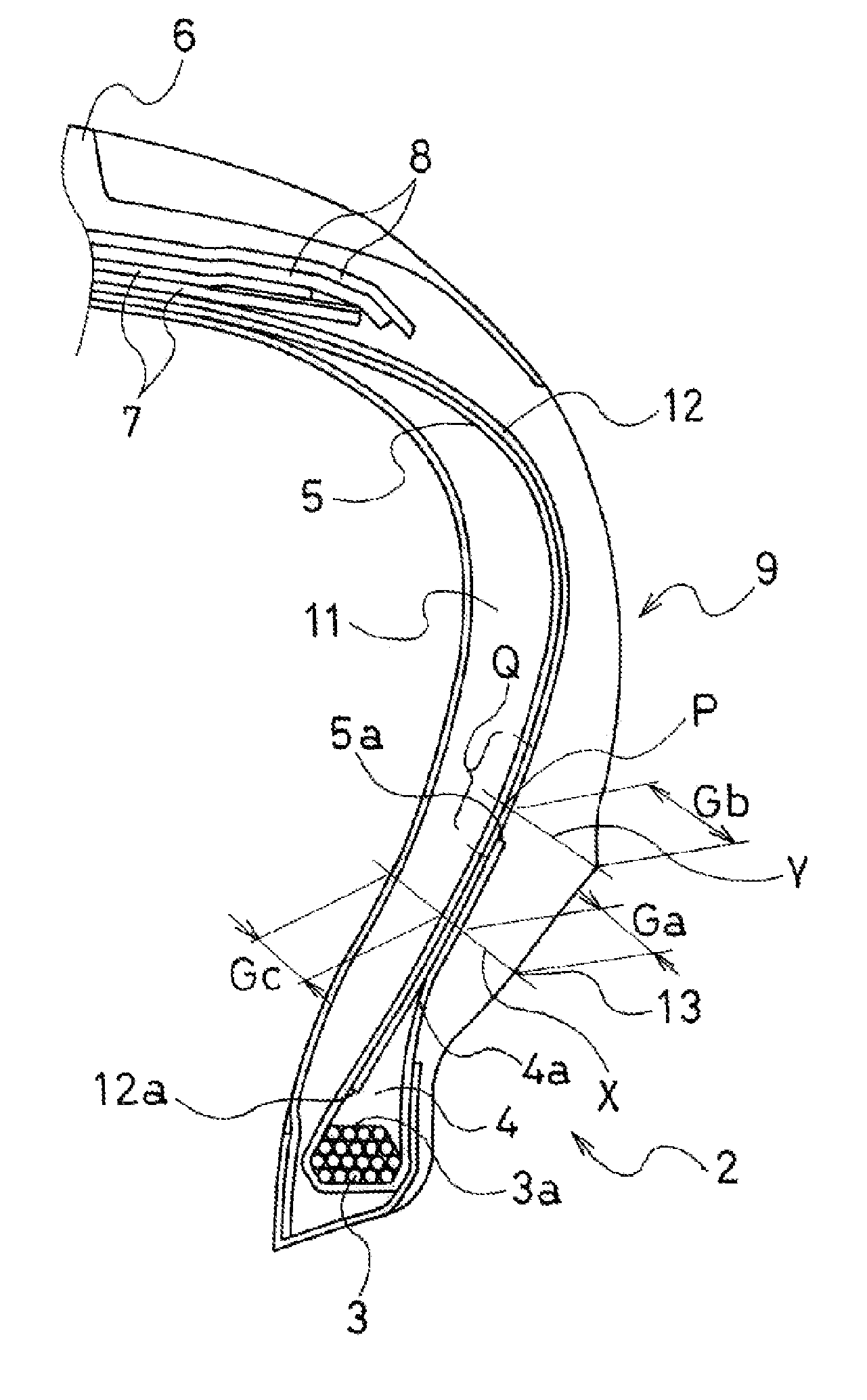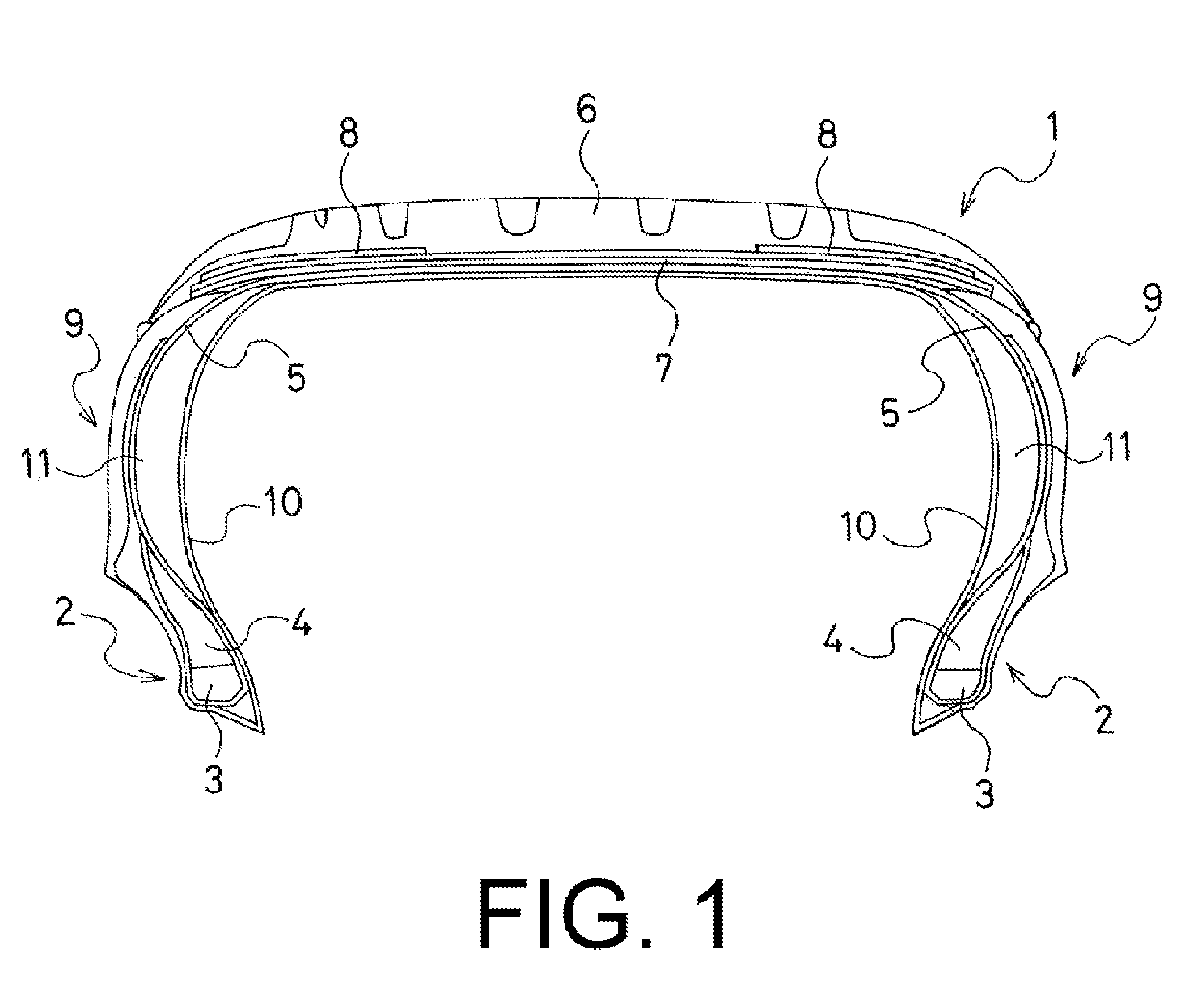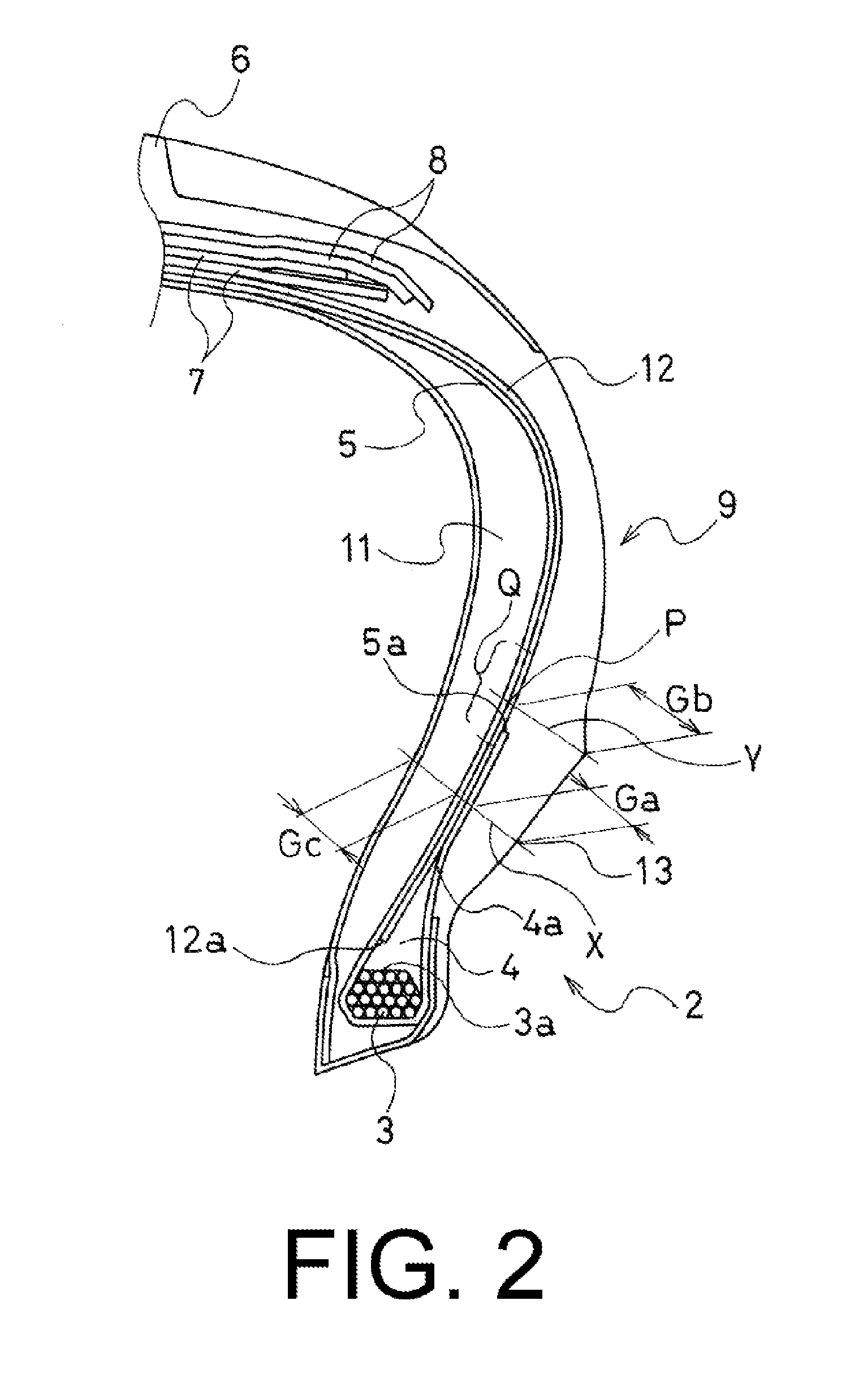Run flat tire
a technology of run-flat tires and crown portions, which is applied in the direction of pneumatic tyre reinforcements, tire beads, vehicle components, etc., can solve the problems of tire breakdown, limited degree of excellent run-flat durability that can be guaranteed, and tire breakdown, etc., to achieve excellent steering stability, improve the stiffness of the crown portion, and improve the effect of riding comfor
- Summary
- Abstract
- Description
- Claims
- Application Information
AI Technical Summary
Benefits of technology
Problems solved by technology
Method used
Image
Examples
example , working examples 1 and 2
Conventional Example, Working Examples 1 and 2, Comparative Examples 1 and 2
[0043]A conventional tire (Conventional Example), present technology tires (Working Examples 1 and 2), and comparative tires (Comparative Examples 1 and 2) were manufactured having a common tire size of 245 / 45R17 and a basic construction of the left and right side wall portions as illustrated in FIG. 2. The presence / absence of the second carcass layer 12, position of the outer peripheral edge 4a of the bead filler 4, rubber thicknesses Ga, Gb, and Gc in the upper region of the bead portion 2, and the position of the folded up end 5a of the carcass layer 5 were each varied as shown in Table 1.
[0044]These five types of tires were each mounted on the front and rear wheels of a front-engine front-wheel drive (FF) vehicle having an engine displacement of 1,800 cc. Run-flat durability and riding comfort were evaluated via the test methods described below.
[0045]Note that in each of the tires, rayon fiber cord was u...
working example 3
[0049]The side reinforcing layers 11,11 in the tire of Working Example 1 described above, as shown in Table 2, were fabricated from the inner side rubber 11a and the outer side rubber 11b that are connected in the tire radial direction and that have different JIS-A hardnesses to manufacture a tire of Working Example 3 of the present technology. Here, cross-sectional areas of the inner side rubber 11a and the outer side rubber 11b were equivalent.
[0050]For this tire, evaluations of run-flat durability and riding comfort were performed using the same test methods described above, and the results thereof, along with the results of the Conventional Example shown in Table 1, were recorded in Table 2.
TABLE 2ConventionalWorkingExampleExample 3JIS-A rubberInner side rubber8085hardness of the side11areinforcing layer 11Outer side rubber807511bEvaluation ResultsRun-flat durability100110Riding comfort34.7
[0051]It is evident from Table 2 that, compared to the tire of the Conventional Example, t...
working example 4
[0052]The folded up end 5a of the carcass layer 5 in the tire of Working Example 1 described above, as shown in Table 3, was configured to extend to the inner side of the edge of the belt layer 7 in one of the side wall portions 9, and was also configured so that the carcass layer 5 and the edge of the belt layer 7 overlapped 5 mm. Thus, a tire of Working Example 4 of the present technology was manufactured.
[0053]For this tire, evaluations of run-flat durability and riding comfort were performed using the same test methods described above, and the results thereof, along with the results of the Conventional Example shown in Table 1, were recorded in Table 3.
TABLE 3ConventionalWorkingExampleExample 4Position of the folded up end 5aLower side of PUnder the edge ofof the carcass layer 545 mmthe belt layer 7(5 mm overlap)EvaluationRun-flat durability100110ResultsRiding comfort33.7
[0054]It is evident from Table 3 that, compared to the tire of the Conventional Example, the tire of the Work...
PUM
| Property | Measurement | Unit |
|---|---|---|
| thickness | aaaaa | aaaaa |
| thickness | aaaaa | aaaaa |
| speed | aaaaa | aaaaa |
Abstract
Description
Claims
Application Information
 Login to View More
Login to View More - R&D
- Intellectual Property
- Life Sciences
- Materials
- Tech Scout
- Unparalleled Data Quality
- Higher Quality Content
- 60% Fewer Hallucinations
Browse by: Latest US Patents, China's latest patents, Technical Efficacy Thesaurus, Application Domain, Technology Topic, Popular Technical Reports.
© 2025 PatSnap. All rights reserved.Legal|Privacy policy|Modern Slavery Act Transparency Statement|Sitemap|About US| Contact US: help@patsnap.com



